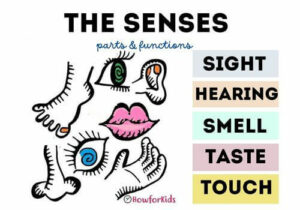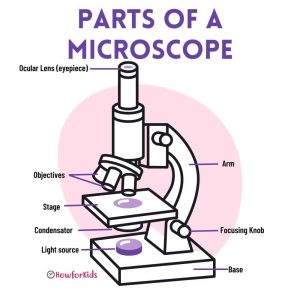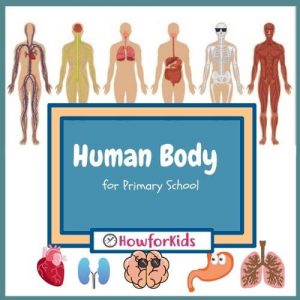The brain is a complex organ located inside our head. More accurately, when we speak of the brain, we are referring to the encephalon. So, what is the human brain? Human Brain: Functions and Anatomy
Learn about the most complex organ in the Human Body
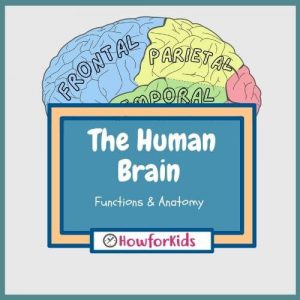
The brain is the main structure of the nervous system. It is located in the anterior and superior part of the cranial cavity and is present in all vertebrates. It communicates constantly with the rest of the body through the sense organs. To understand this topic, we’ll explain the parts of the nervous system.
Neuroscience for Kids
Table of Contents
How is the nervous system divided? For its study, from the anatomical point of view, the nervous system is divided into:
- Central Nervous System: It consists of the brain and spinal cord.
- Peripheral Nervous System: Consists of the spinal nerves and the cranial nerves.
Functions of the Human Brain in the Nervous System
The Human Brain is “a control center” that commands our entire organism.
- It is part of the nervous system that has a fundamental role in controlling the processes that occur within the body and its relationship with the environment.
- It controls thoughts, emotions and memory.
- Together with the endocrine system, they work to respond to stimuli and monitor organs and structures.
What is the Human Brain?

Brain Parts and Functions
The brain consists of three parts: brain stem, cerebellum, cerebrum.
1. Brain Stem
It sits on the spinal cord and controls functions such as digestion, breathing, and the heartbeat. There are twelve pairs of cranial nerves. The brain consists of:
- Midbrain: Its function is to conduct motor impulses from the cerebral cortex to the pons, and sensory impulses from the spinal cord to the thalamus.
- Pons: It function is to connect the medulla with the cerebral hemispheres.
- Medulla Oblonga: It is an enlargement located in the upper part of the spinal cord. It joins the brain with the spinal cord. Its main function is to control involuntary movements such as the heartbeat or the movement of the eyelids.
2. Cerebellum
The cerebellum is located at the back of the head. Functions:
- It controls fine, coordinated movements (running, walking, writing, threading a needle, drawing lines). It also coordinates speech (the movements that allow you to speak).
- It maintains muscle tone and body posture.
- It processes the information coming from the inner ear related to the balance of the body.
3. Cerebrum
It’s the largest part of the brain and it is formed by the right and left hemispheres.The surface of the brain has numerous folds, called convolutions, and grooves called sulci. The deep grooves are called fissures and they divide it into two halves called cerebral hemispheres, one on each side of the head. Scientists know for sure that the right part of the brain controls the left part of the human body and that the left part controls the right.
How Does the Human Brain Work?
The brain is made up of two halves called the cerebral hemispheres. If you look down on a human brain from overhead, you will notice that it appears to be divided in half. These two parts are connected to each other by intersecting nerves. Each half has specialized functions.
Something very curious is that the left half of our brain controls the right half of our body and the right side controls the left part of the body. These functions change depending on whether you are left-handed or right-handed. That is, if you handle yourself with your distracted hand or with your left hand. In right-handed people, the left side of the brain controls functions such as language and numbers, while the right side is the artistic hemisphere that is also used to recognize objects.
Read also: The five Sense Organs for kids
Main Functions of the Human Brain
The cerebral hemispheres are practically identical to each other only those different processes are carried out in each one. They stay informed of what is happening on the other side because they communicate through the corpus callosum. And both are divided into four lobes: Parietal, occipital, frontal, temporal.
Parts of the Brain and Functions: Chart

Brain Hemispheres
In each lobe of each hemisphere are identified:
- Sensory areas: They receive sensory impulses.
- Motor areas: They control voluntary movements.
- Areas of association: They intervene in processes of memory, reasoning, language and emotions.
Brain Anatomy Lesson for Kids
Left Brain
In most people it is the dominant hemisphere. It masters numbers and calculations, and coordinates the right part of the body. It is used for analytical reasoning, for mathematics, logic and has to do with language, speech and writing. It deals with order because it tends to discipline.
Right Brain
The right hemisphere regulates abstract concepts such as music, art, poetry, colors, and shapes. It is the creative hemisphere, it deals with novel issues, it is passionate and has an intuitive ability.
Also read: The Microscope: Parts and Functions
Brain Lobes and their Main Functions
1. Parietal Lobe
It is located on each side of the ear. It processes sensory information from the body, sensations, and perception. It is linked to the knowledge of numbers and the manipulation of objects. It is related to temperature, pain, pleasure, contact with light, the operation of the hands.
2. Temporal Lobe
It is located under the surface of each ear; it is responsible for hearing and participates in the understanding of language. It relates the stimuli that enter through the senses, through people, places, events and moments lived, memory, the meanings of words and names of objects.
3. Occipital Lobe
It deals with vision. It processes data that comes from the environment and relates it to what is happening. Collaborate with the visual cortex to achieve understanding. It is involved with the ability to see and interpret.
4. Frontal Lobe
The frontal lobe in humans is the largest of the lobes of the brain. Its development ends around the age of twenty-five. It allows us to control impulses, behavior, reasoning, participates in problem solving.
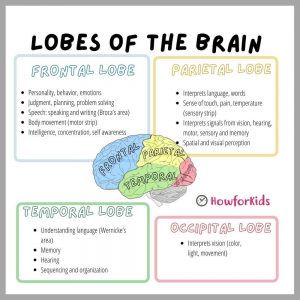
Human Brain Facts
How much of our brain do we use?
The idea that we only use 10% of the brain is a popular misconception. Each part of the brain has a certain function. Many intellectual abilities can improve with training. The idea that much of the brain is not used has no logical foundation.
Each neuron is continuously active. Studies on brain damage ensure that if 90% of the brain is not used, in the presence of lesions in some areas, performance should not be affected. On the contrary, when there is brain damage some skill is lost. Even damage to the smallest areas can have serious consequences.
Is the brain a muscle?
No, the brain is not a muscle. We often hear it said that “the brain must be exercised so that it does not atrophy”, or “use it or lose it” like the muscles. However, the brain is made up of millions of neurons. Neurons, are the cells of the nervous system, allow to regulate all the functions of the body.
How many brains do we have?
Although we have only one brain, Paul Mac Lean, a psychologist, developed a model of the brain based on its evolutionary development in which he distinguishes three levels within the human brain. They are connected to each other on a neuronal and biochemical level. Each layer or “brain” was added successively in response to evolutionary needs. Currently, there are more modern theories.
- Neocortex (Rational Zone)
- Limbic or tonsillar system (Emotional Zone)
- Reptilian System (Instinctive Zone)
Structure of the Human Brain

Brain Gray Matter: The Brain Cortex
The surface of the brain and cerebellum have a lining that is a vital layer for its function. It’s called the cerebral cortex, and it’s where most of the actual information processing takes place. It is called “gray matter” because the nerves connecting this area lack the insulation that makes most other parts of the brain appear white. The brain has folds that increase its surface area, which increases the amount of gray matter and, therefore, the amount of information to be processed.
The cerebral hemispheres are made up of gray matter and white matter. The gray matter is the outermost part or cerebral cortex. Function: Receives information from the sense organs and develops response orders to their stimuli.
White Matter
The white matter is the internal area composed of axons covered with myelin. It transmits sensory information from the rest of the body to the cerebral cortex. It regulates autonomous (involuntary) functions such as body temperature and heart rate.
The more we use the brain, the more it remains active and generates new connections.
Keep using your brain!🧠
